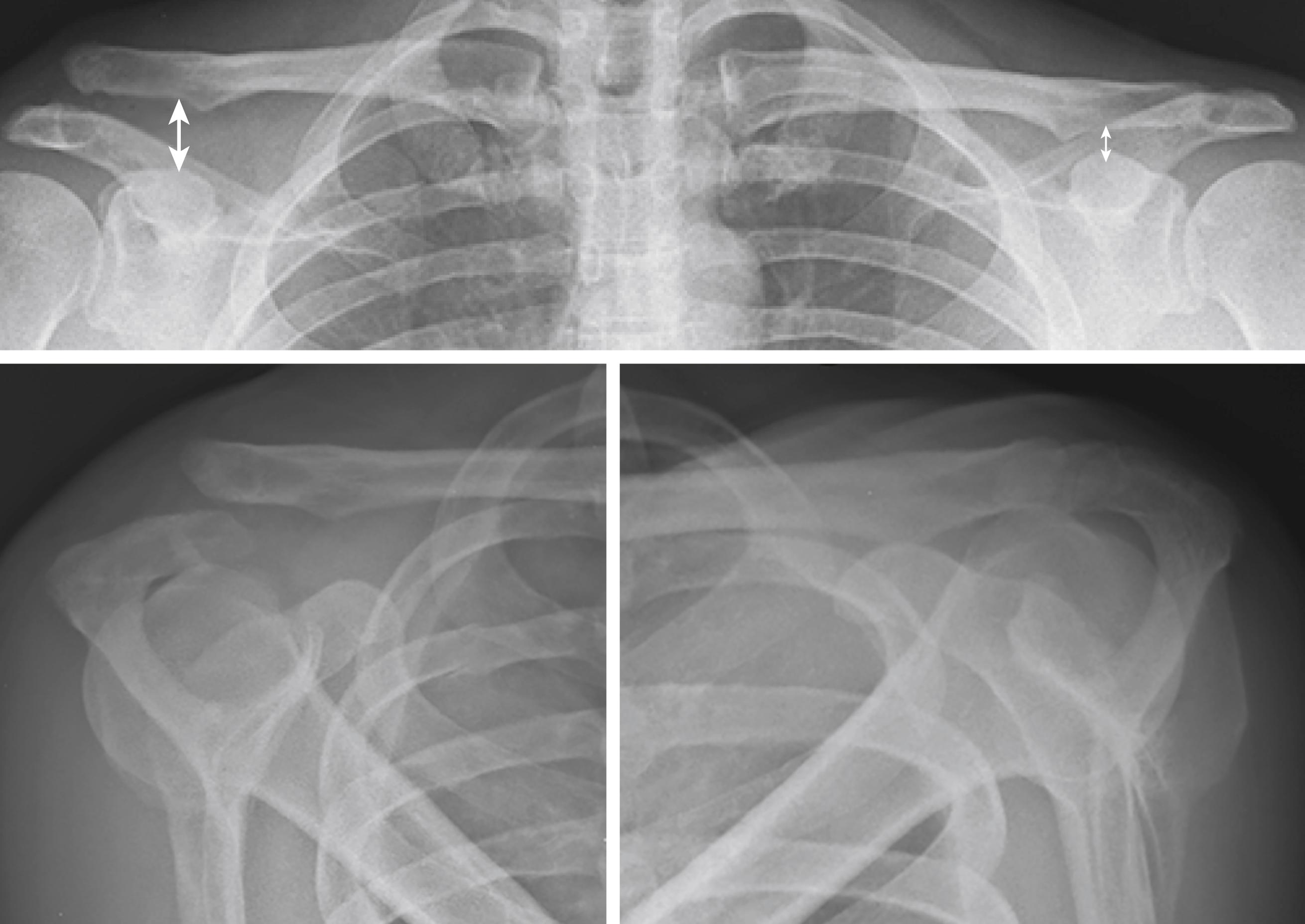Physical Address
304 North Cardinal St.
Dorchester Center, MA 02124
Combined coraco- and acromioclavicular stabilization using a low-profile single TightRope (Arthrex, Naples, FL, USA) device and an additional FiberTape (Arthrex) cerclage is indicated in acute high-grade bidirectional acromioclavicular (AC) joint instabilities (Rockwood type IV–VI dislocations), and depending on the patient’s functional requirements, for select type IIIb separations. Chronic lesions, on the other hand, should initially be addressed conservatively and surgery should be reserved for patients in whom conservative measures have failed. If nonoperative treatment fails, combined coraco- and acromioclavicular stabilization with the aid of a free hamstring tendon autograft or allograft supported with a low-profile TightRope is our surgical procedure of choice for these patients.
The low-profile device used for the techniques described in this chapter was designed to reduce the risks of irritation from the knot stack and hardware as well as tunnel widening. ,
The diagnosis of an AC joint dislocation should always be based on the patient’s history, clinical examination, and imaging. , It is important to evaluate the date of injury, to determine acute versus chronic, as well as possible pretreatments. Although the terms “acute” and “chronic” regarding the timing of surgery post injury are still not well defined, we, as most authors, consider AC joint separations as acute within 3 weeks after trauma. A deformity, with the clavicle appearing elevated, can often be observed on physical examination. Reducing the clavicle manually (piano key sign) confirms the injury. Horizontal stability also needs to be examined and is likewise tested manually. For detection of possible concomitant lesions, a full physical examination of both shoulders should, furthermore, be performed in all cases. For radiographic evaluation, bilateral anteroposterior stress views with 10 kg of axial load are recommended ( Fig. 13.1 ). The amount of vertical dislocation can be determined on these by measuring the coracoclavicular difference. Additionally, bilateral Alexander or axillary views should be obtained for assessment of potential additional dynamic posterior translation ( Fig. 13.1 ).

Become a Clinical Tree membership for Full access and enjoy Unlimited articles
If you are a member. Log in here